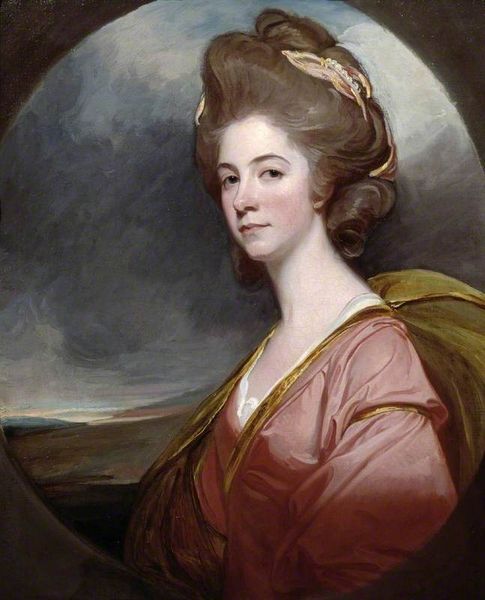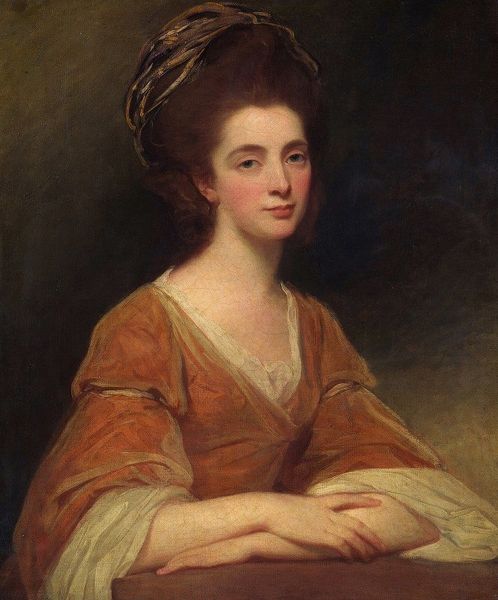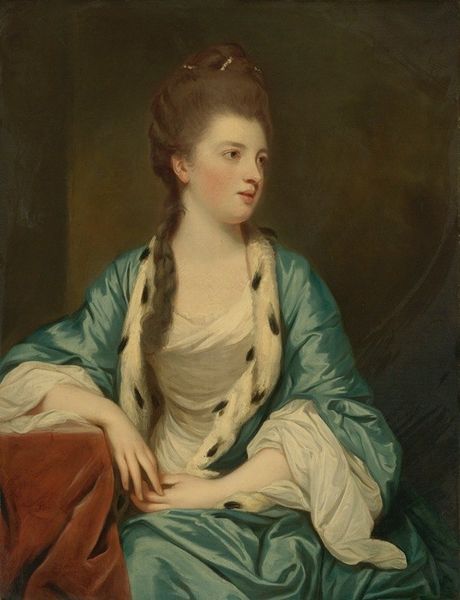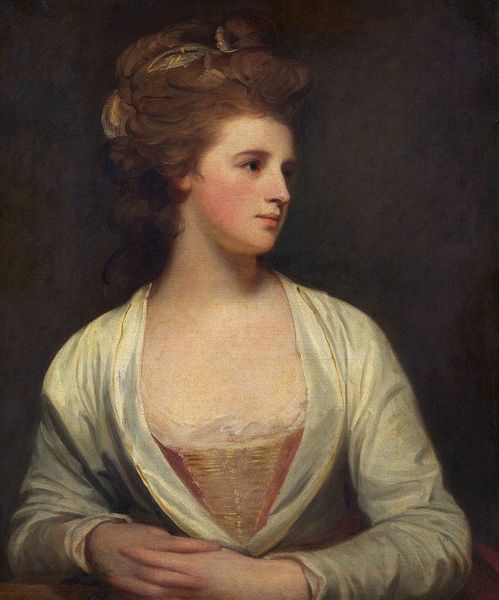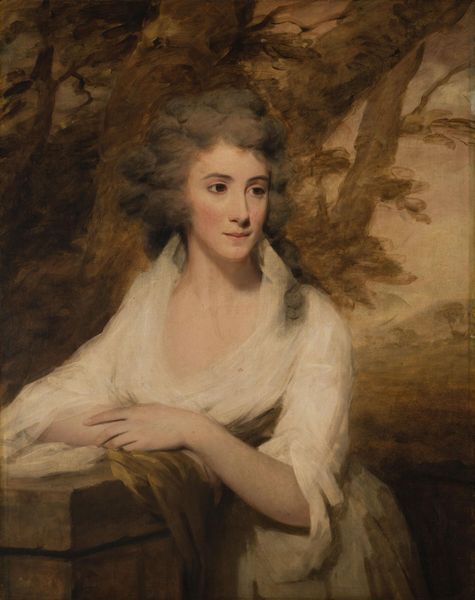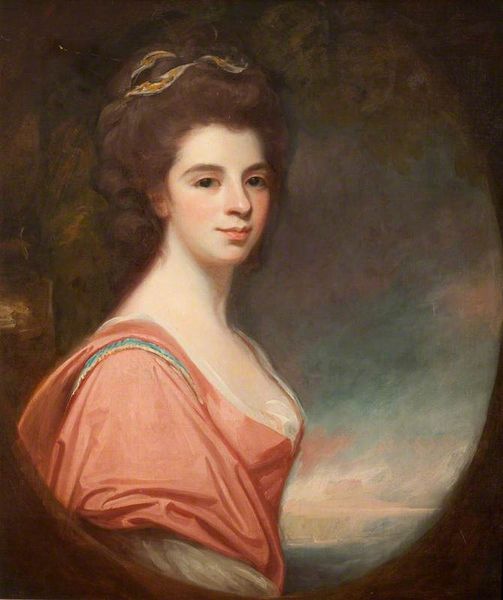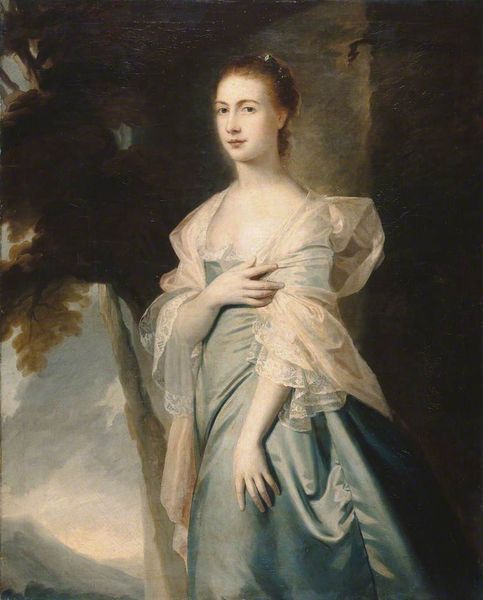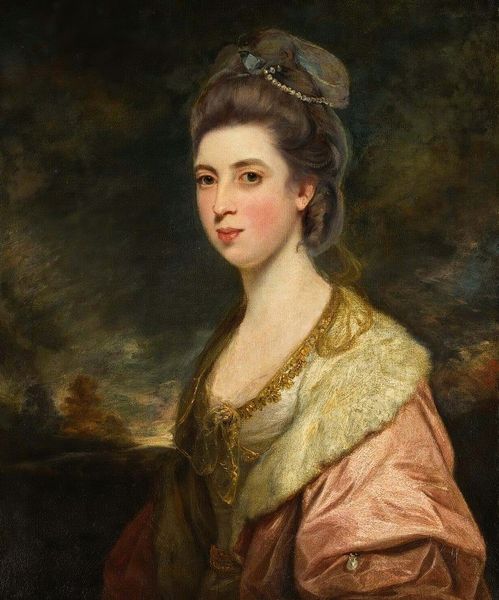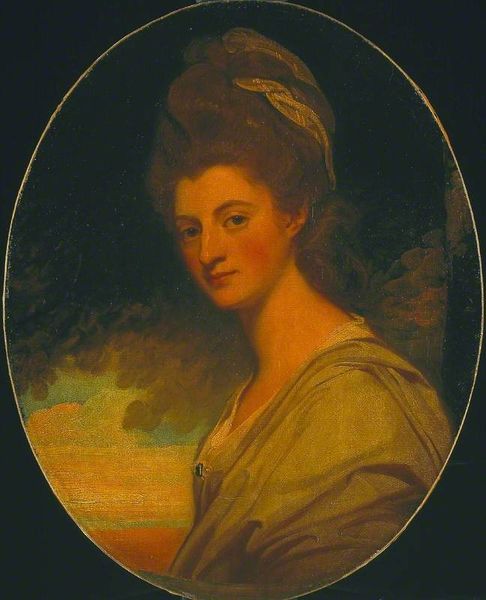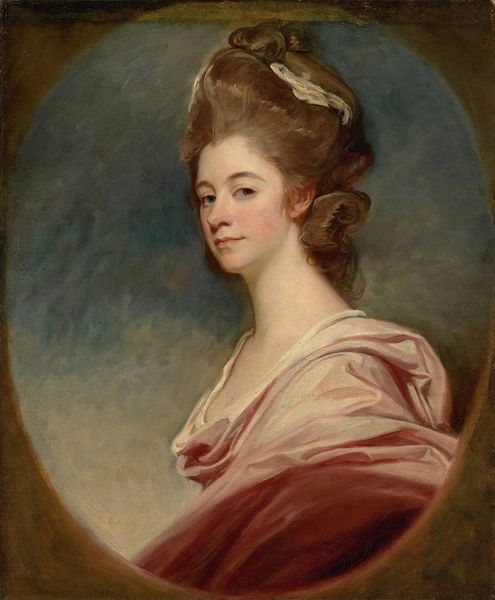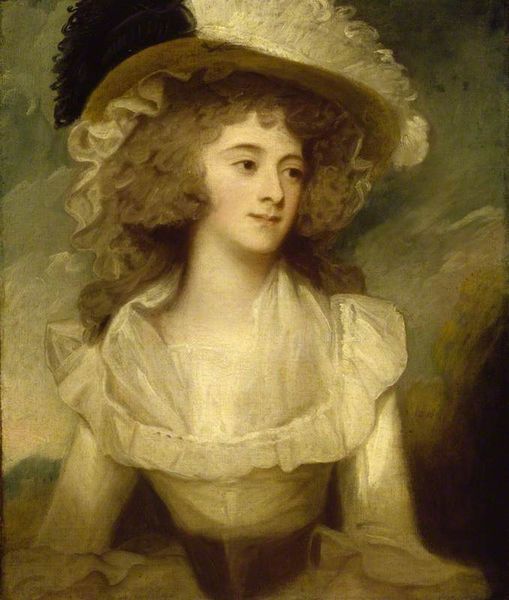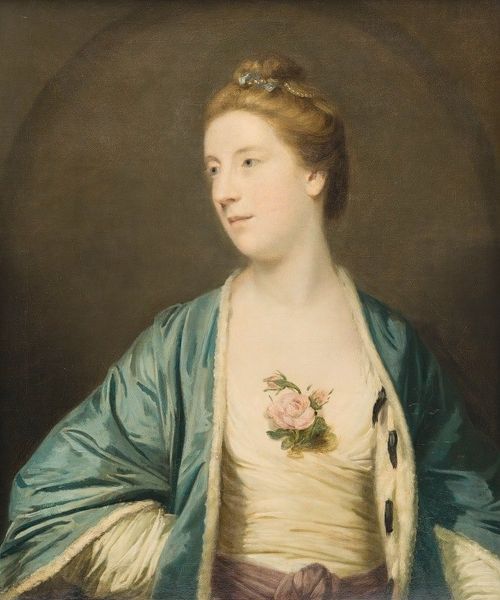
Mrs William Marwood, née Mary Goulston (1743–1807), Wife of William Marwood of Busby, near Stokesley, Yorkshire
0:00
0:00
painting, oil-paint
#
portrait
#
portrait image
#
painting
#
oil-paint
#
portrait reference
#
portrait head and shoulder
#
romanticism
#
animal portrait
#
animal drawing portrait
#
portrait drawing
#
history-painting
#
facial portrait
#
lady
#
portrait art
#
fine art portrait
#
digital portrait
Copyright: Public domain
Curator: Here we have a portrait of Mrs. William Marwood, nee Mary Goulston. Editor: She looks terribly uncomfortable, stiff as a board. All that elaborate fabric and teased hair – I imagine she couldn’t wait to escape this sitting. Curator: Oil on canvas, depicting the wife of a Yorkshire landowner; portraits like this reveal a lot about the social and economic structures of the time. The textile production that enabled such elaborate garments... and the artistic skill, obviously. It’s all tied to power and wealth. Editor: I'm mainly struck by the painter's restraint. It could have been an explosion of rococo frippery, but there's a muted quality to the color palette. Look how that subtle green plays against the barely-there gold in her hair. Even that gauzy detail at the neck is rendered with almost ghostly restraint. Curator: The work suggests a complex relationship between patronage, artistic license, and the rising consumer culture that characterized England in the Georgian era. Artists relied on wealthy patrons like the Marwoods. The ability to afford and commission portraits becomes another form of display... Editor: All those layers of signification! I like that you bring attention to labor because it highlights this implicit narrative beneath the placid surface – labor of sitter, painter, servants, weavers, dyers... Curator: Indeed. By exploring these elements, we move beyond a simple appreciation of aesthetic value, understanding the portrait as a cultural artifact deeply embedded within its specific historical moment. We see the networks and the relations of artistic, financial, and cultural exchange... Editor: Which I can still enjoy. Despite the sitter's apparent tension, the artist caught something honest in her gaze. The slight smirk and weary repose. There's humanity in that stillness; you have to dig for it, but it is definitely there. Curator: Absolutely. The layering, of course, starts with pigment and ends with those gazes—between us, subject, and artist—across temporal distance. I believe it makes the experience particularly poignant. Editor: Right. This piece feels smaller, somehow more immediate now... Almost a shared secret across the centuries. Thanks for laying out the context – my perception is richer for it.
Comments
No comments
Be the first to comment and join the conversation on the ultimate creative platform.


